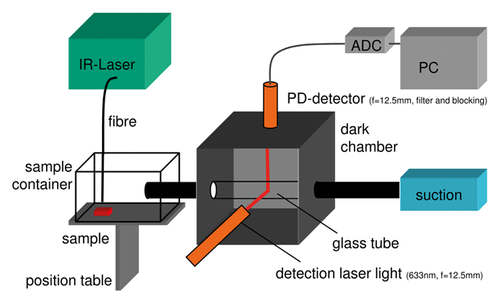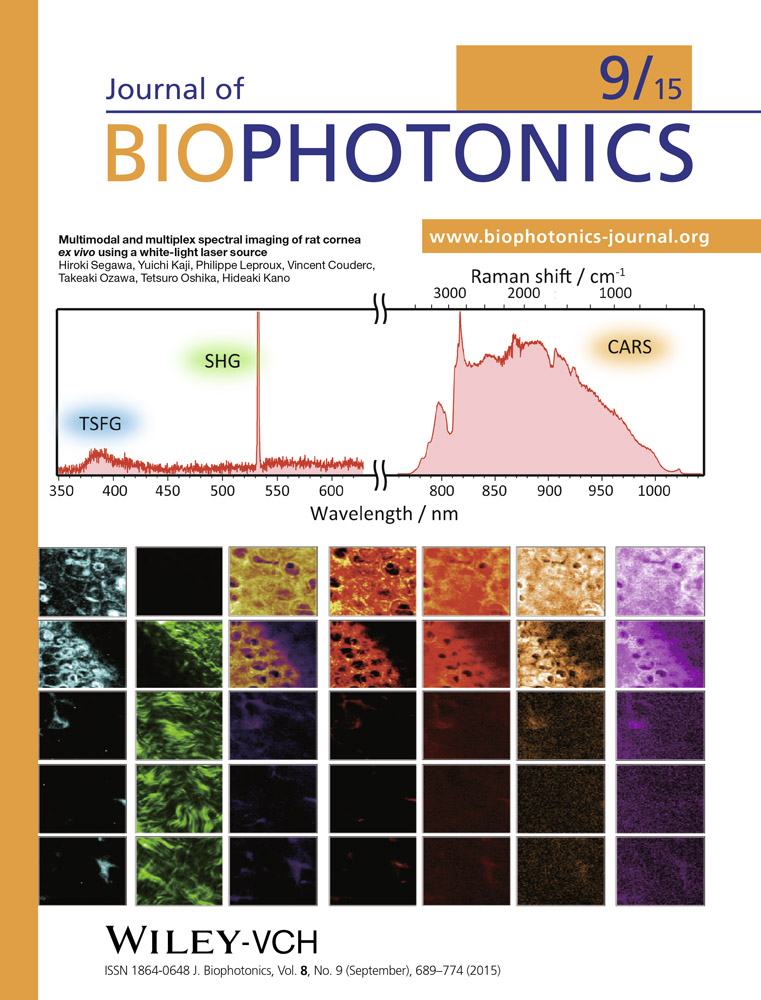In-vitro investigations on laser-induced smoke generation mimicking the laparoscopic laser surgery purposes
Abstract
Intraoperative smoke-generation limits the quality of vision during laparoscopic/endoscopic laser-assisted surgeries. The current study aimed at the evaluation of factors affecting this phenomenon. As a first step, a suitable experimental setup and a test tissue model were established for this investigation. The experimental setup is composed of a specific sample container, a laser therapy component suitable for the ablation of model tissue at different treatment wavelengths (λ = 980 nm, 1350 nm, 1470 nm), a suction unit providing continuous smoke extraction, and a detection unit for smoke quantification via detection of light (λ = 633 nm) scattered from smoke particles. The ablation rate (AR) was calculated by dividing the ablated volume by the ablation time (60 sec). The laser-induced scattering signal intensity of the smoke (SI) was determined from time-charts of the signal intensity as a measure for vision, in addition a delay-time tdelay could be derived defining the onset of SI after the laser was switched on. The ratio SI/AR is used as a measure for smoke generation in relation to the ablation rate. Additionally the light transmission of the tissue samples was used to estimate their optical properties. In this set-up, smoke generation using λ = 980 nm as ablation laser wavelength was detected after a delay-time tdelay = (121.6 ± 24.8) sec which is significantly longer compared to the wavelengths λ = 1350 nm with tdelay = (89.8 ± 19.3) sec and λ = 1470 nm with tdelay = (24.7 ± 5.4) sec. Thus, the delay
Experimental set-up consisting of sample container, laser therapy component, suction unit and scattered-light detection compartment. time is wavelength-dependent. The SI/AR ratio was significantly different (p < 0.001) for 1470 nm irradiation compared to 980 nm irradiation [SI/AR(1470) = (11.8 ± 2.6) · 103 vs. SI/AR(980) = (8.6 ± 2.0) · 103]. The ablation crater for 980 nm irradiation was comparable with 1470 nm irradiation, but the coagulation rim was thicker in the 980 nm case. In conclusion, it could be shown experimentally that smoke-generation depends on the wavelength used for laser ablation.




